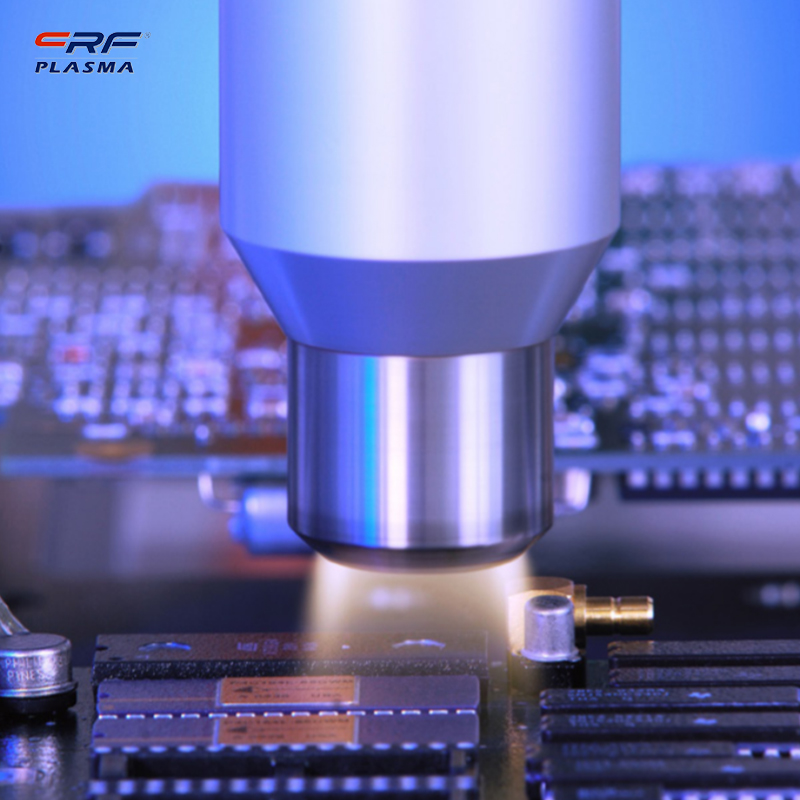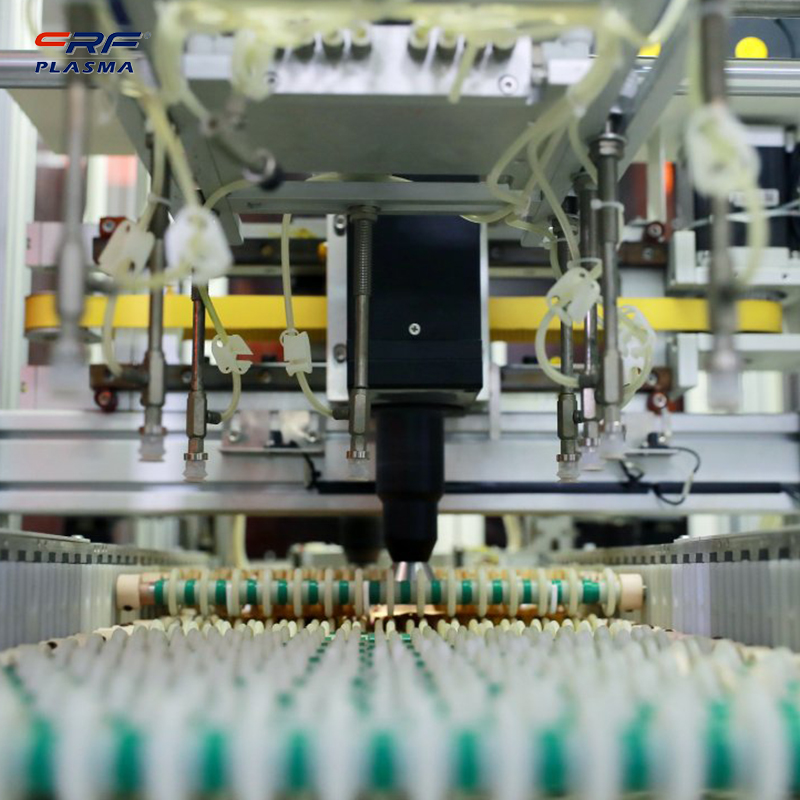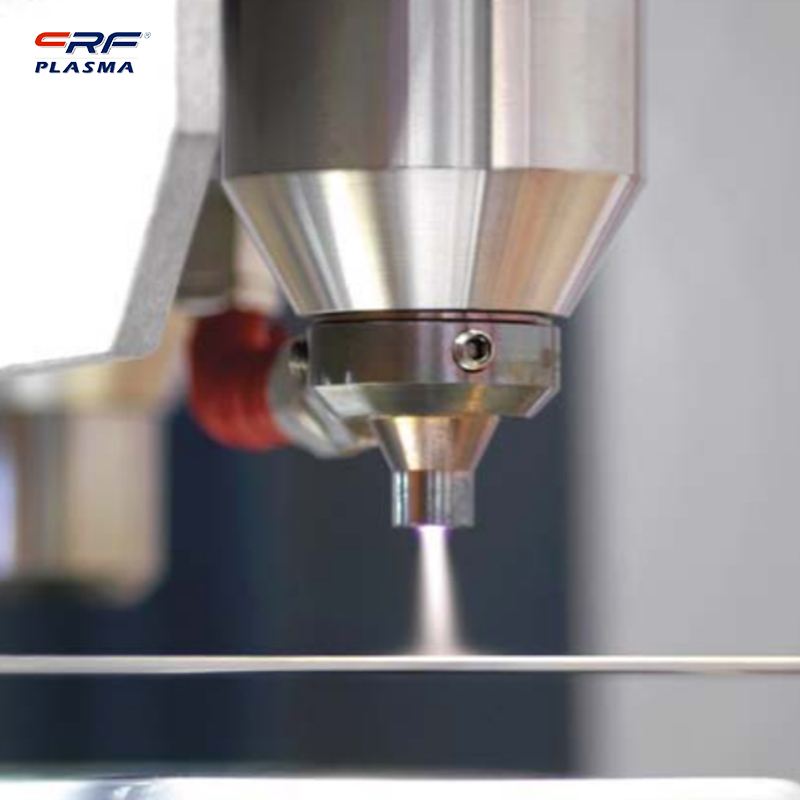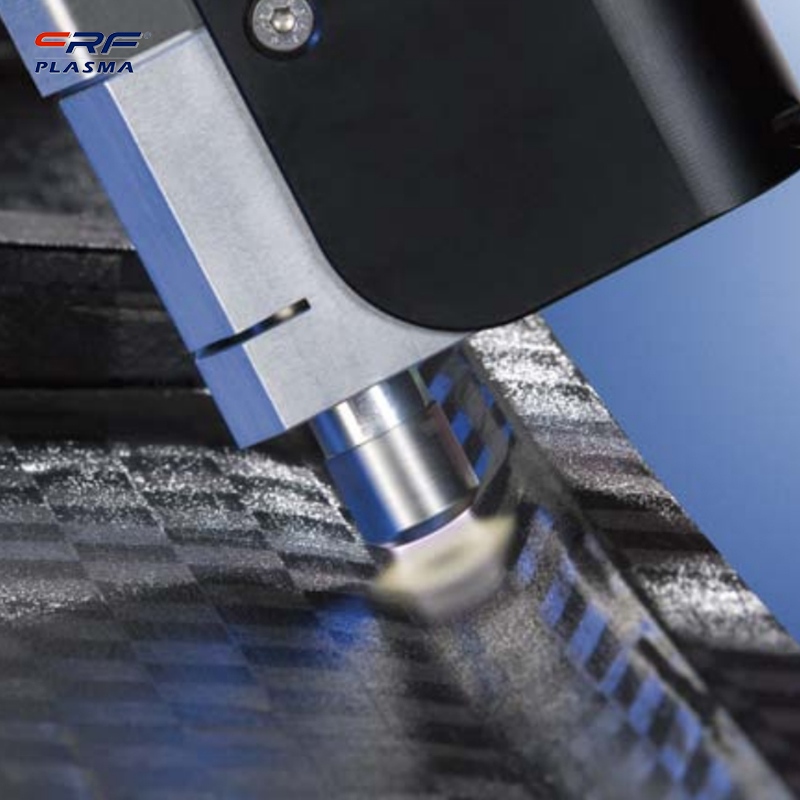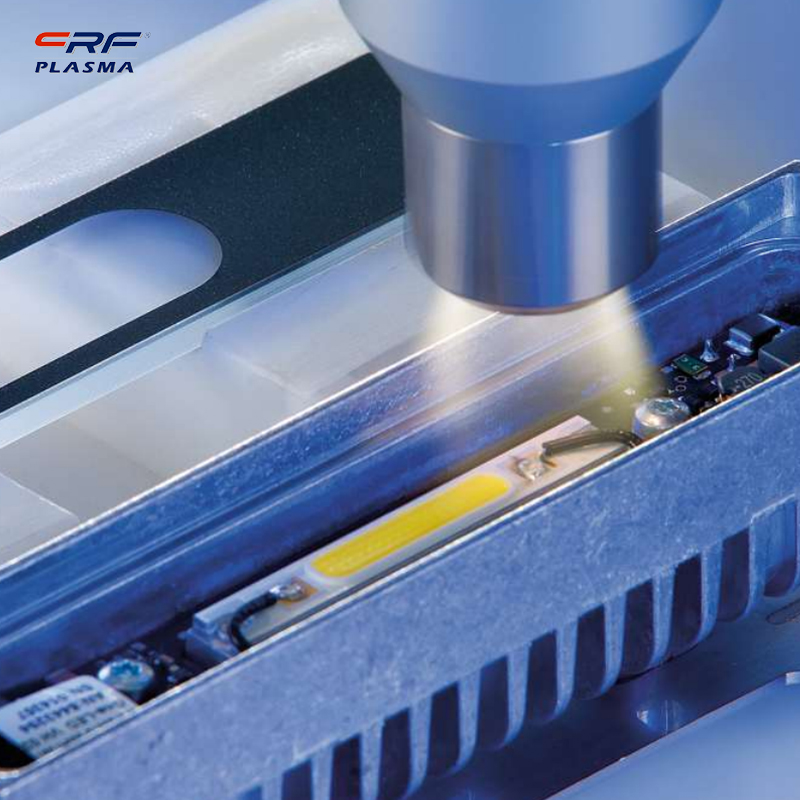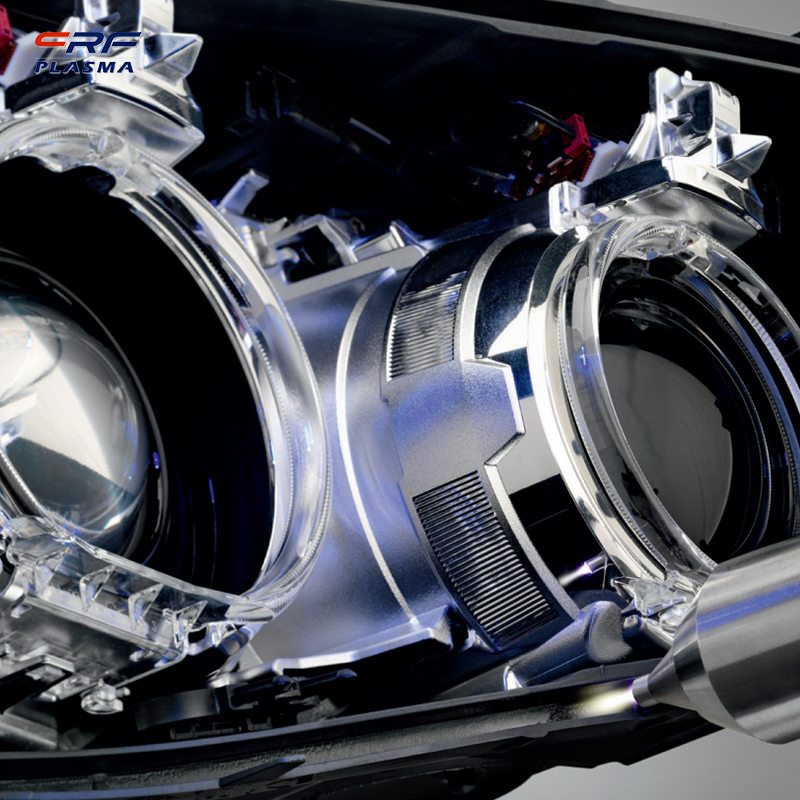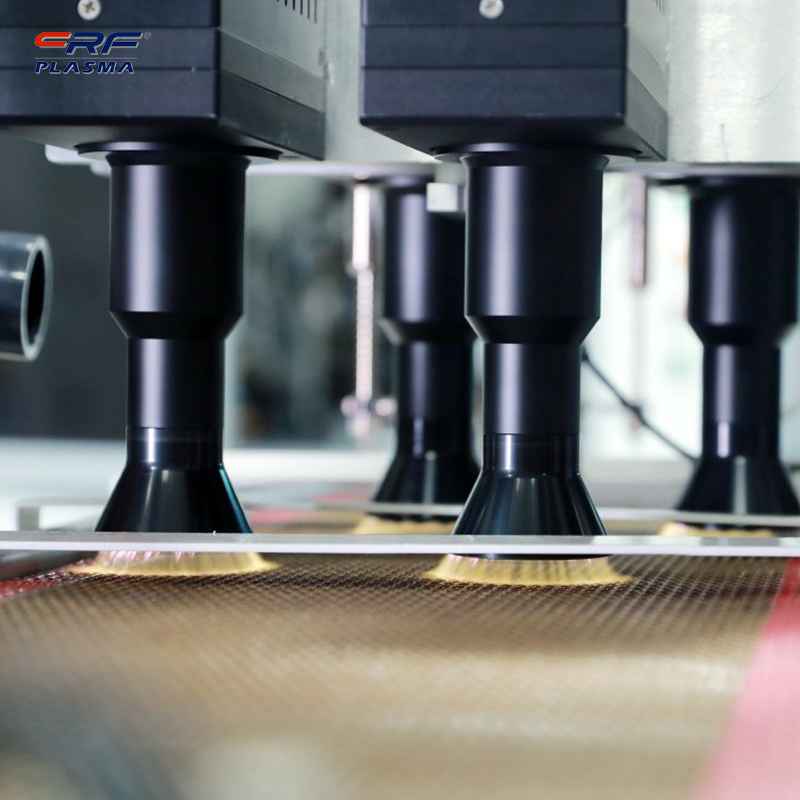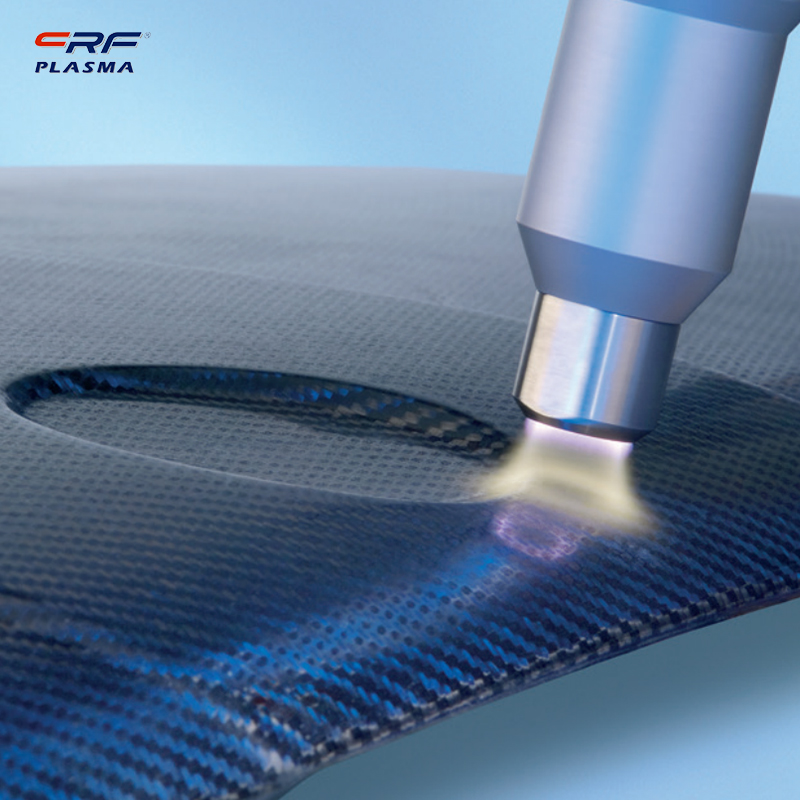
Welcome to Shenzhen Sing Fung Intelligent Manufacturing Co., Ltd.
E-mail:shaobo@sfi-crf.com
Study of plasma working environment on improving the hydrophilicity of PITFE material surface
- Categories:Industry News
- Author:Plasma cleaning machine-CRF plasma plasma equipment-plasma surface treatment machine manufacturer-chengfeng intelligent manufacturing
- Origin:
- Time of issue:2022-10-14
- Views:
(Summary description)Study of plasma working environment on improving the hydrophilicity of PITFE material surface: Polytetrafluoroethylene (PIFE) has been widely used in industrial applications because of its unique properties such as excellent chemical stability, dielectric properties, very low coefficient of dynamic friction, better machinability and flame retardancy. Diaphragm paper, also known as polyethylene (PE) film, its role in lithium-ion batteries is to isolate the positive and negative materials, and the quality of the diaphragm paper directly affects the safety performance and capacity of the battery, so the choice of high-quality diaphragm paper has been a must for battery manufacturers. Biocompatible silicone rubber and polyester as a new thermoplastic engineering plastics have a wide range of uses, but due to the poor surface wettability of such polymer materials and other defects, limiting its application in the medical, health and other special industrial technology fields. Most of the surfaces of new polymeric materials are hydrophobic, which limits their adhesive and other applications. Plasma surface modification is a very forward-looking method to optimize the structure and properties of the material surface by plasma. The main methods of surface activation are chemical etching, optical radiation, plasma treatment, ion implantation, and surface graft polymerization. Plasma surface modification is to optimize the structure of the material surface by discharging plasma, which has become a common material surface modification method in industry because of its specific environmental and cost advantages. pife, pe, silicone rubber polyester, strip-like samples, can be treated with continuous drive plasma. When the power is the same, the modification effect of plasma is Ar+H, N2, O2 in descending order. increasing the power is instead detrimental to the improvement of surface hydrophilicity of PIFE samples, which is due to the fact that at high power, there are significantly more high-energy particles in the plasma, which strengthen the impact on the material surface and can make some reactive groups on the surface inactive, thus reducing the introduction of reactive groups. The pressure has no significant effect on the contact angle when the discharge voltage is stronger than 10 Pa as well as less than 50 Pa. However, when the air pressure is greater than 50 Pa, the contact angle increases instead, which may be due to the high air pressure that makes it difficult for the gas to be completely ionized, thus affecting the modification of the PTFE surface. Plasma gives the material new surface properties, but the effect of plasma surface treatment has the problem of timeliness, with the placement time and show certain changes, with the extension of time, the surface contact angle will gradually increase. The reason for the decay of the time-dependent wettability of the plasma-treated but ungrafted surface may be multifaceted, which may be due to the failure of the newly introduced hydrophilic groups to dive into the surface of the material after a period of time; it may also be due to the cross-linking chemical reactions on the surface, thus decreasing the hydrophilicity of the material surface. Therefore, in order to prevent the failure of the plasma-treated surface, grafting and bonding must be carried out within a specified period of time to maintain and make full use of the modification effect. Plasma contains a large number of electrons, ions, excited atoms, molecules and radicals and other reactive particles, these reactive particles and polymer materials interact to oxidation, reduction, cleavage, cross-linking and polymerization of various physical and chemical reactions on the surface of the material, thus optimizing the surface properties of the material, increasing the surface hygroscopicity (or hydrophobicity), dyeability, adhesion, antistatic properties and bio compatibility, etc. Plasma achieves surface modification of polymers such as polytetrafluoroethylene, PE battery separators, silicone rubber, and polyesters. Plasma working conditions have a significant effect on improving the hydrophilicity of PITFE material surfaces. Plasma treatment introduces a large number of polar groups on the surface of the material, which is responsible for the improvement of its hydrophilicity. Translated with www.DeepL.com/Translator (free version)
Study of plasma working environment on improving the hydrophilicity of PITFE material surface
(Summary description)Study of plasma working environment on improving the hydrophilicity of PITFE material surface:
Polytetrafluoroethylene (PIFE) has been widely used in industrial applications because of its unique properties such as excellent chemical stability, dielectric properties, very low coefficient of dynamic friction, better machinability and flame retardancy. Diaphragm paper, also known as polyethylene (PE) film, its role in lithium-ion batteries is to isolate the positive and negative materials, and the quality of the diaphragm paper directly affects the safety performance and capacity of the battery, so the choice of high-quality diaphragm paper has been a must for battery manufacturers. Biocompatible silicone rubber and polyester as a new thermoplastic engineering plastics have a wide range of uses, but due to the poor surface wettability of such polymer materials and other defects, limiting its application in the medical, health and other special industrial technology fields.
Most of the surfaces of new polymeric materials are hydrophobic, which limits their adhesive and other applications. Plasma surface modification is a very forward-looking method to optimize the structure and properties of the material surface by plasma. The main methods of surface activation are chemical etching, optical radiation, plasma treatment, ion implantation, and surface graft polymerization. Plasma surface modification is to optimize the structure of the material surface by discharging plasma, which has become a common material surface modification method in industry because of its specific environmental and cost advantages. pife, pe, silicone rubber polyester, strip-like samples, can be treated with continuous drive plasma. When the power is the same, the modification effect of plasma is Ar+H, N2, O2 in descending order. increasing the power is instead detrimental to the improvement of surface hydrophilicity of PIFE samples, which is due to the fact that at high power, there are significantly more high-energy particles in the plasma, which strengthen the impact on the material surface and can make some reactive groups on the surface inactive, thus reducing the introduction of reactive groups.
The pressure has no significant effect on the contact angle when the discharge voltage is stronger than 10 Pa as well as less than 50 Pa. However, when the air pressure is greater than 50 Pa, the contact angle increases instead, which may be due to the high air pressure that makes it difficult for the gas to be completely ionized, thus affecting the modification of the PTFE surface. Plasma gives the material new surface properties, but the effect of plasma surface treatment has the problem of timeliness, with the placement time and show certain changes, with the extension of time, the surface contact angle will gradually increase. The reason for the decay of the time-dependent wettability of the plasma-treated but ungrafted surface may be multifaceted, which may be due to the failure of the newly introduced hydrophilic groups to dive into the surface of the material after a period of time; it may also be due to the cross-linking chemical reactions on the surface, thus decreasing the hydrophilicity of the material surface. Therefore, in order to prevent the failure of the plasma-treated surface, grafting and bonding must be carried out within a specified period of time to maintain and make full use of the modification effect.
Plasma contains a large number of electrons, ions, excited atoms, molecules and radicals and other reactive particles, these reactive particles and polymer materials interact to oxidation, reduction, cleavage, cross-linking and polymerization of various physical and chemical reactions on the surface of the material, thus optimizing the surface properties of the material, increasing the surface hygroscopicity (or hydrophobicity), dyeability, adhesion, antistatic properties and bio compatibility, etc. Plasma achieves surface modification of polymers such as polytetrafluoroethylene, PE battery separators, silicone rubber, and polyesters. Plasma working conditions have a significant effect on improving the hydrophilicity of PITFE material surfaces. Plasma treatment introduces a large number of polar groups on the surface of the material, which is responsible for the improvement of its hydrophilicity.
Translated with www.DeepL.com/Translator (free version)
- Categories:Industry News
- Author:Plasma cleaning machine-CRF plasma plasma equipment-plasma surface treatment machine manufacturer-chengfeng intelligent manufacturing
- Origin:
- Time of issue:2022-10-14 11:25
- Views:
Study of plasma working environment on improving the hydrophilicity of PITFE material surface:
Polytetrafluoroethylene (PIFE) has been widely used in industrial applications because of its unique properties such as excellent chemical stability, dielectric properties, very low coefficient of dynamic friction, better machinability and flame retardancy. Diaphragm paper, also known as polyethylene (PE) film, its role in lithium-ion batteries is to isolate the positive and negative materials, and the quality of the diaphragm paper directly affects the safety performance and capacity of the battery, so the choice of high-quality diaphragm paper has been a must for battery manufacturers. Biocompatible silicone rubber and polyester as a new thermoplastic engineering plastics have a wide range of uses, but due to the poor surface wettability of such polymer materials and other defects, limiting its application in the medical, health and other special industrial technology fields.
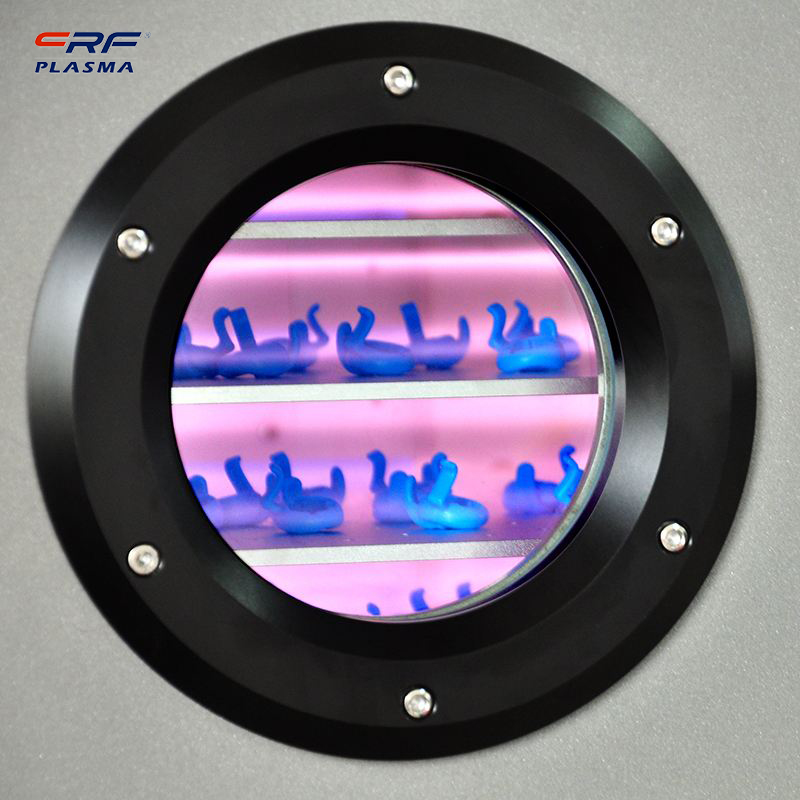 Most of the surfaces of new polymeric materials are hydrophobic, which limits their adhesive and other applications. Plasma surface modification is a very forward-looking method to optimize the structure and properties of the material surface by plasma. The main methods of surface activation are chemical etching, optical radiation, plasma treatment, ion implantation, and surface graft polymerization. Plasma surface modification is to optimize the structure of the material surface by discharging plasma, which has become a common material surface modification method in industry because of its specific environmental and cost advantages. pife, pe, silicone rubber polyester, strip-like samples, can be treated with continuous drive plasma. When the power is the same, the modification effect of plasma is Ar+H, N2, O2 in descending order. increasing the power is instead detrimental to the improvement of surface hydrophilicity of PIFE samples, which is due to the fact that at high power, there are significantly more high-energy particles in the plasma, which strengthen the impact on the material surface and can make some reactive groups on the surface inactive, thus reducing the introduction of reactive groups.
Most of the surfaces of new polymeric materials are hydrophobic, which limits their adhesive and other applications. Plasma surface modification is a very forward-looking method to optimize the structure and properties of the material surface by plasma. The main methods of surface activation are chemical etching, optical radiation, plasma treatment, ion implantation, and surface graft polymerization. Plasma surface modification is to optimize the structure of the material surface by discharging plasma, which has become a common material surface modification method in industry because of its specific environmental and cost advantages. pife, pe, silicone rubber polyester, strip-like samples, can be treated with continuous drive plasma. When the power is the same, the modification effect of plasma is Ar+H, N2, O2 in descending order. increasing the power is instead detrimental to the improvement of surface hydrophilicity of PIFE samples, which is due to the fact that at high power, there are significantly more high-energy particles in the plasma, which strengthen the impact on the material surface and can make some reactive groups on the surface inactive, thus reducing the introduction of reactive groups.
The pressure has no significant effect on the contact angle when the discharge voltage is stronger than 10 Pa as well as less than 50 Pa. However, when the air pressure is greater than 50 Pa, the contact angle increases instead, which may be due to the high air pressure that makes it difficult for the gas to be completely ionized, thus affecting the modification of the PTFE surface. Plasma gives the material new surface properties, but the effect of plasma surface treatment has the problem of timeliness, with the placement time and show certain changes, with the extension of time, the surface contact angle will gradually increase. The reason for the decay of the time-dependent wettability of the plasma-treated but ungrafted surface may be multifaceted, which may be due to the failure of the newly introduced hydrophilic groups to dive into the surface of the material after a period of time; it may also be due to the cross-linking chemical reactions on the surface, thus decreasing the hydrophilicity of the material surface. Therefore, in order to prevent the failure of the plasma-treated surface, grafting and bonding must be carried out within a specified period of time to maintain and make full use of the modification effect.
Plasma contains a large number of electrons, ions, excited atoms, molecules and radicals and other reactive particles, these reactive particles and polymer materials interact to oxidation, reduction, cleavage, cross-linking and polymerization of various physical and chemical reactions on the surface of the material, thus optimizing the surface properties of the material, increasing the surface hygroscopicity (or hydrophobicity), dyeability, adhesion, antistatic properties and bio compatibility, etc. Plasma achieves surface modification of polymers such as polytetrafluoroethylene, PE battery separators, silicone rubber, and polyesters. Plasma working conditions have a significant effect on improving the hydrophilicity of PITFE material surfaces. Plasma treatment introduces a large number of polar groups on the surface of the material, which is responsible for the improvement of its hydrophilicity.
Translated with www.DeepL.com/Translator (free version)
Scan the QR code to read on your phone

TEL:0755-3367 3020 / 0755-3367 3019

E-mail:sales-sfi@sfi-crf.com

ADD:Mabao Industrial Zone, Huangpu, Baoan District, Shenzhen






